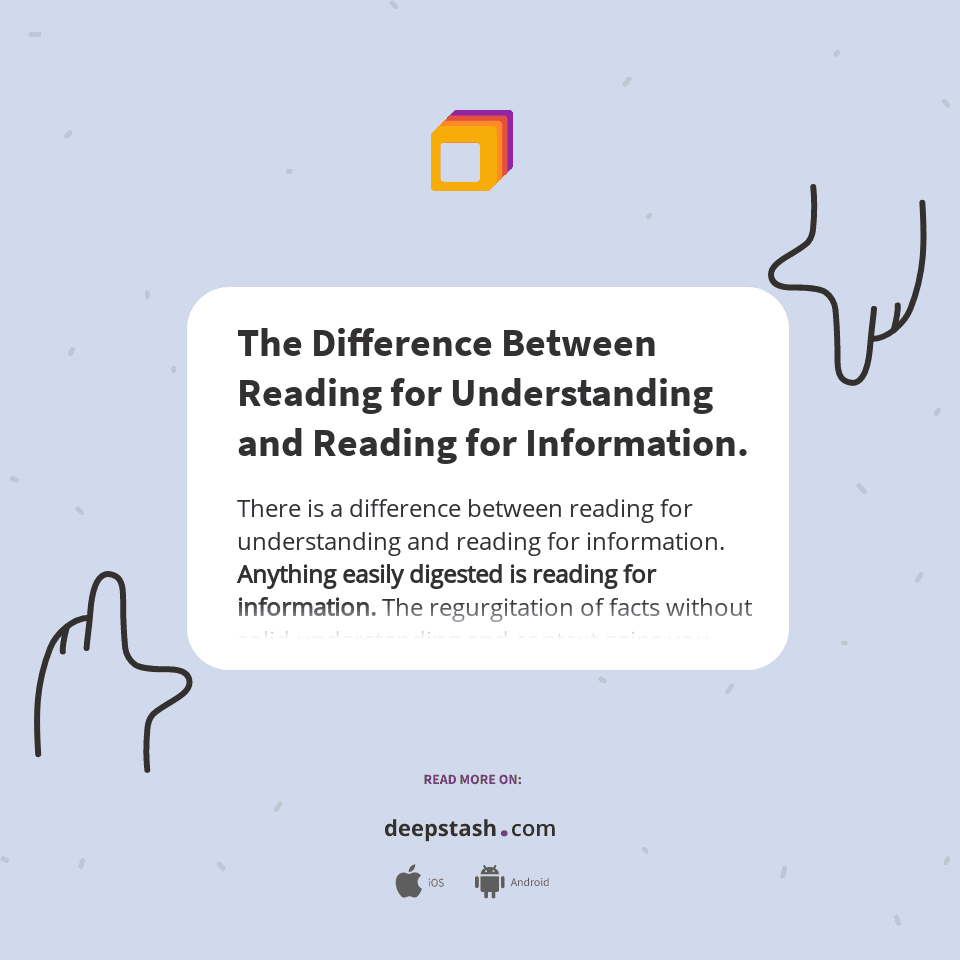A lot of people confuse knowing the name of something with understanding. While great for exercising your memory, the regurgitation of facts without solid understanding and context gains you little in the real world.
A useful heuristic: Anything easily digested is reading for information.
Consider the newspaper, are you truly learning anything new? Do you consider the writer your superior when it comes to knowledge of the subject? The odds are probably not. That means you’re reading for information. It means you’re likely to parrot an opinion that isn’t yours as if you had done the work.
240
2.29K reads
CURATED FROM
IDEAS CURATED BY
This book explains not just why we should read books, but how we should read them. It's masterfully done.
“
Similar ideas
How We Learn To Read
There is a difference between reading for understanding and reading for information.
A lot of people confuse knowing the name of something with understanding. While great for exercising your memory, the regurgitation ...
The Difference Between Reading for Understanding and Reading for Information.
There is a difference between reading for understanding and reading for information. Anything easily digested is reading for information. The regurgitation of facts without solid understanding and context gains you little in the real world. Learning something insightful requires ...
Attention span
While it’s incredible to consider the amount of information readily available at our fingertips thanks to social media, it also means that people have become far more easily distracted.
...Read & Learn
20x Faster
without
deepstash
with
deepstash
with
deepstash
Personalized microlearning
—
100+ Learning Journeys
—
Access to 200,000+ ideas
—
Access to the mobile app
—
Unlimited idea saving
—
—
Unlimited history
—
—
Unlimited listening to ideas
—
—
Downloading & offline access
—
—
Supercharge your mind with one idea per day
Enter your email and spend 1 minute every day to learn something new.
I agree to receive email updates


